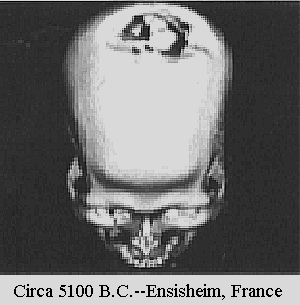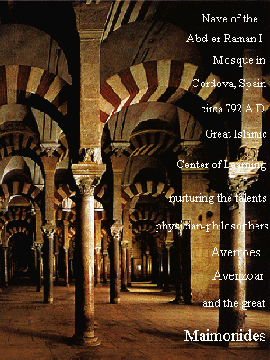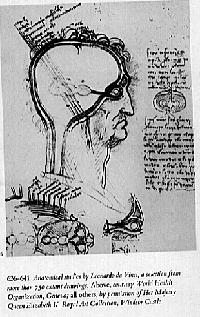 Unearthed remains of successful brain operations, as well as surgical implements, were found in France-- at one of Europe's noted archeological digs.
Unearthed remains of successful brain operations, as well as surgical implements, were found in France-- at one of Europe's noted archeological digs. And, the success rate was remarkable, even circa 7,000 B.C.
But, pre-historic evidence of brain surgery was not limited to Europe. Pre-Incan civilization used brain surgery as an extensive practice as early as 2,000 B.C. In Paracas, Peru, a desert strip south of Lima, archeologic evidence indicates that brain surgery was used extensively. Here, too, an inordinate success rate was noted as patients were restored to health. The treatment was used for mental illnesses, epilepsy, headaches, organic diseases, osteomylitis, as well as head injuries.
Brain surgery was also used for both spiritual and magical reasons; often, the practice was limited to kings, priests and the nobility.
Surgical tools in South America were made of both bronze and man-shaped obsidian (a hard, sharp-edged volcanic rock).
Africa showed evidence of brain surgery as early as 3,000 B.C. in papyrus writings found in Egypt. "Brain," the actual word itself, is used here for the first time in any language. Egyptian knowledge of anatomy may have been rudimentary, but the ancient civilization did contribute important notations on the nervous system.
Hippocrates, the father of modern medical ethics, left many texts on brain surgery. Born on the Aegean Island of Cos in 470 B.C., Hippocrates was quite familiar with the clinical signs of head injuries. He also described seizures accurately, as well as spasms and classified head contusions, fractures and depressions. Many concepts found in his texts were still in good stead two thousand years after his death in 360 B.C. 
Ancient Rome in the first century A.D. had its brain surgeon star, Aulus Cornelius Celsus. Hippocrates did not operate on depressed skull fractures; Celsus often did. Celsus also described the symptoms of brain injury in great detail.
Asia was home to many talented brain surgeons: Galenus of Pergamon, born in Turkey, and the physicians of Byzance such as Oribasius (4th century) and Paul of Aegina. An Islamic school of brain surgery also flourished from 800 to 1200 A.D., the height of Islamic influence in the world. Abu Bekr Muhammed el Razi, who lived from 852 to 932 in the Common Era, was perhaps the greatest of Islamic brain srugeons. A second Islamic brain surgeon, Abu l'Qluasim Khalaf, lived and practiced in Cordoba, Spain, and was one of the great influences on western brain surgery.
The Christian surgeons of the Middle Ages were clerics, well educated, knowledgeable in Latin, and familiar with the realm of medical literature. Despite the church's ban on study of anatomy, many churchmen of great renown (advisors and confessors to a succession of Popes) were outstanding physicians and surgeons. Leonardo Davinci's portfolio containing hundreds of accurate anatomical sketches indicates the intense intellectual interest in the workings of the human body despite the Church's ban.

No comments:
Post a Comment